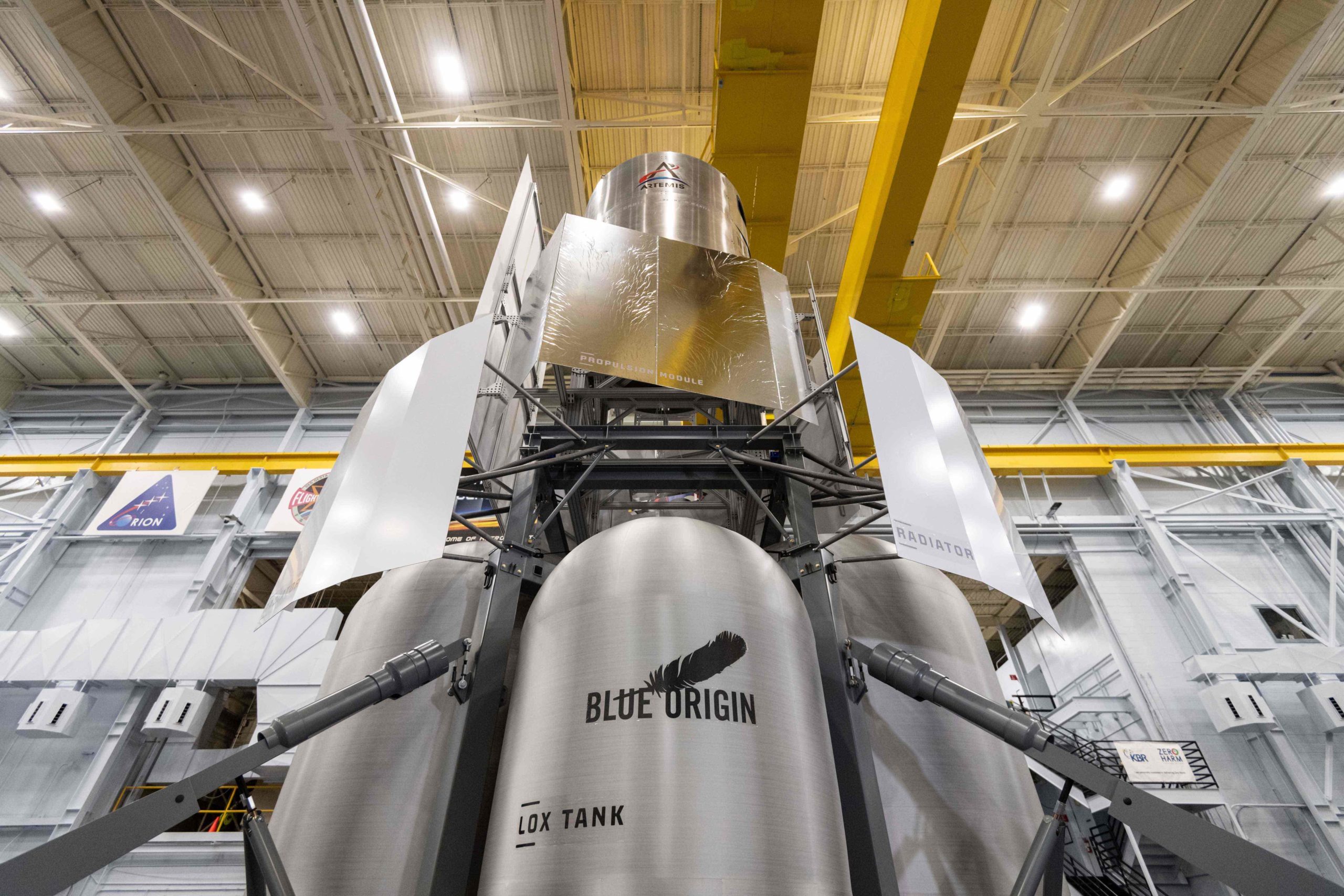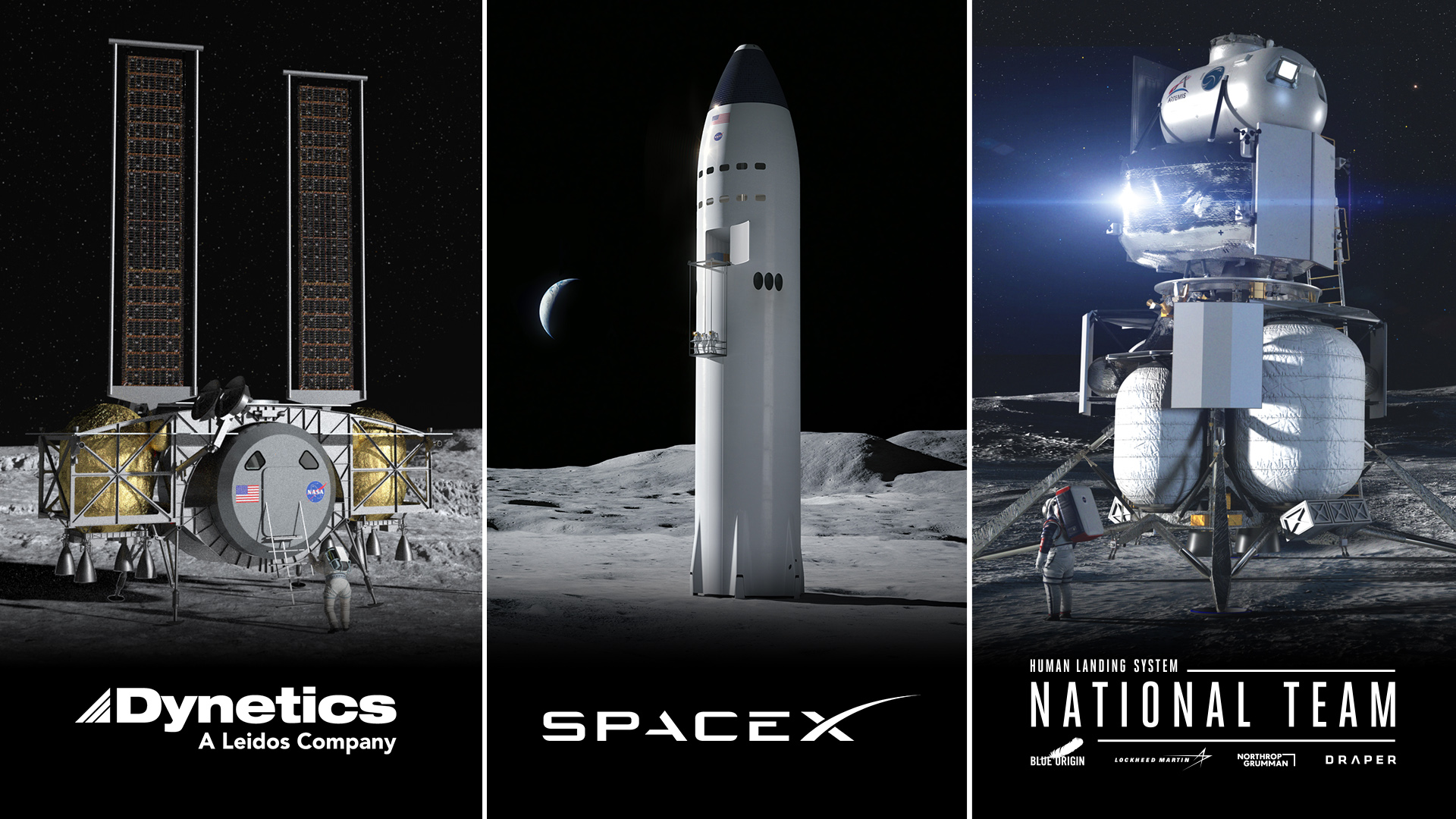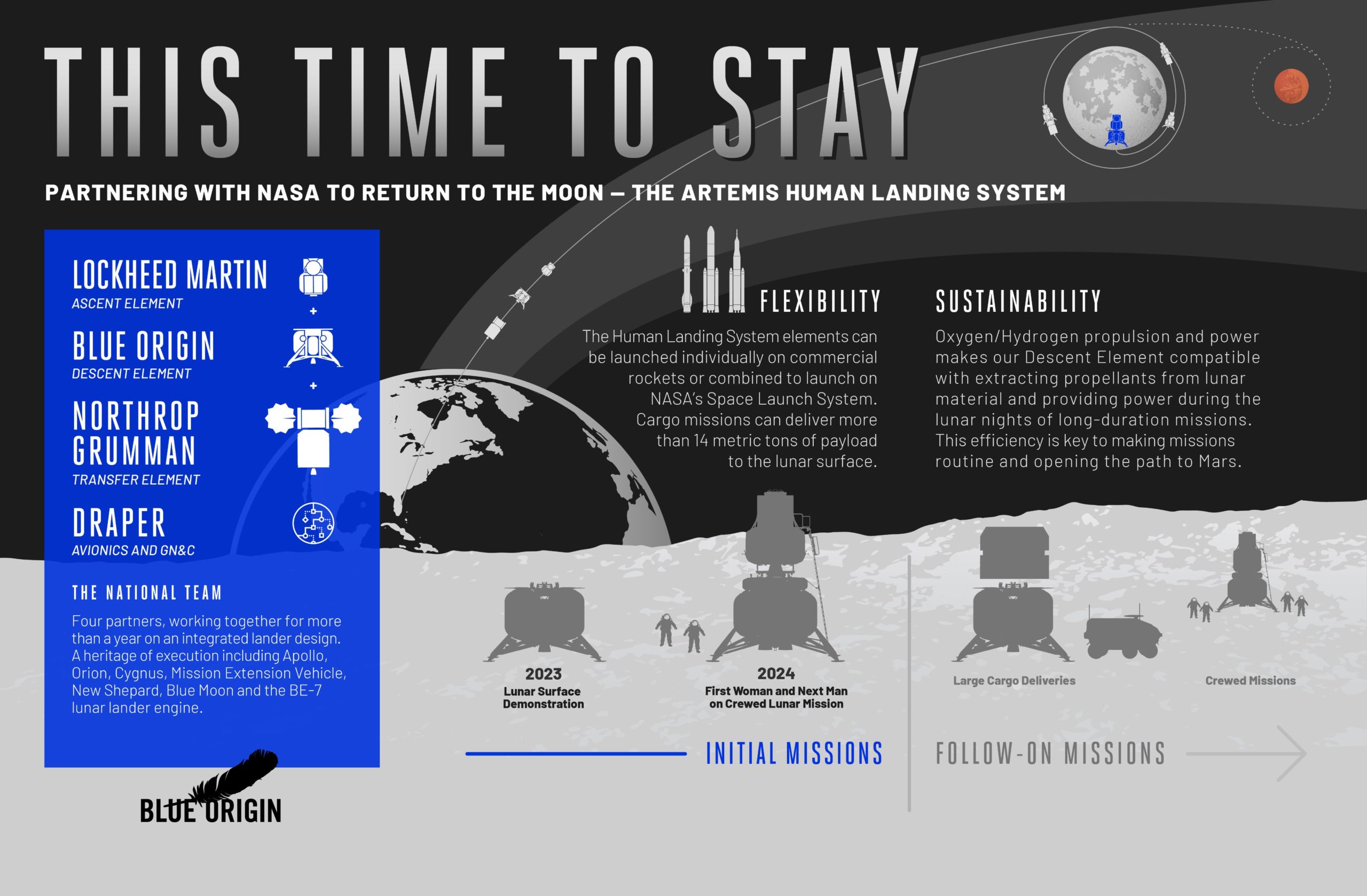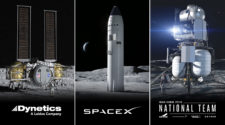
The Blue Origin National Team of four US aerospace companies has delivered a full-scale engineering mockup of their proposed human lunar lander to NASA’s Johnson Space Center as part of NASA’s ambitious Artemis Moon program to return astronauts to the lunar surface by 2024.
The Artemis Human Landing System (HLS) lander has been set up in the Space Vehicle Mockup Facility (SVMF), NASA Johnson Space Center’s (JSC) iconic Building 9, said Blue Origin in an Aug. 20 statement.
The Blue Origin HLS) National Team is comprised of Blue Origin, Lockheed Martin, Northrop Grumman, and Draper.
“The HLS National Team has delivered an engineering mockup of its lunar lander at @NASA_Johnson. This @NASA#Artemis program technical milestone helps the design meet the requirements for future lunar astronauts. @LockheedMartin @northropgrumman @DraperLab,” Blue Origin tweeted with a video of the mockup.
The Blue Origin National Team is one of three groups selected by NASA in late April to work on human lunar landers.
Marking a significant step forward in landing Americans on the Moon by 2024 NASA Administrator Jim Bridenstine announced the selection of three U.S. companies – Blue Origin, SpaceX and Dynetics – to design and develop the critical human landing systems (HLS) under the agency’s Artemis moon landing program.
Blue Origin won by far the largest contract as leader of a ‘National Team’ that includes Northrop Grumman, Lockheed Martin and Draper – valued at $579 million.

The 40-foot-tall, full-scale engineering mockup includes two elements of the National Team’s multi-element architecture – the Ascent Element (AE) based on Lockheed Martin’s Orion crew exploration vehicles that will fly astronauts to the Moon and back and the Descent Element (DE) based on a Blue Origin design leveraged from their robotic cargo lander
The mockup is considered an update to Apollo’s Lunar Module (LM) and will be used to validate the National Team’s approaches for getting crew, equipment, supplies, and samples off and on the vehicle.
“Our National Team solution for the @NASA #Artemis Human Landing System program offers a sustainable architecture, with in-space demonstrations, and flexibility on launch to achieve our return to the Moon to stay @LockheedMartin @northropgrumman @DraperLab,” Blue Origin tweeted.
It will be used by NASA and the JSC Astronaut Office to perform engineering and crew operations tests with astronauts aiming to fly the final system within several years. It will also be upgraded over time to increase the fidelity to the final design.
“Testing this engineering mockup for crew interaction is a step toward making this historic mission real,” said Brent Sherwood, vice president of Advanced Development Programs at Blue Origin. “The learning we get from full-scale mockups can’t be done any other way. Benefitting from NASA’s expertise and feedback at this early stage allows us to develop a safe commercial system that meets the agency’s needs.”

The other two elements include “the Transfer Element, a propulsive stage that starts the lander on its descent trajectory from lunar orbit, is based on Northrop Grumman’s Cygnus vehicle that provides logistics resupply to the International Space Station; and Draper provides descent guidance and avionics to the National Team.”
Blue Origin was founded by billionaire Jeff Bezos, CEO of Amazon.
NASA’s goal under Project Artemis is to land the first woman and next man on the lunar south pole surface by 2024 during the Artemis 3 mission when a crew of astronauts will launch in the Orion Crew Capsule atop the mammoth Space Launch System rocket – currently under development by NASA. Eventually by 2028 NASA aims to establish a sustainable human exploration of the Moon for the first time in history.
The National Team Artemis Human Landing System will launch atop NASA’s SLS mega-rocket. A new lander is the critical missing piece to place Americans back on the lunar surface for the first time in nearly 50 years.
No American or human has set foot on the Moon since 1972 during the Apollo 17 mission – NASA’s last human foray to the Moon’s surface.



